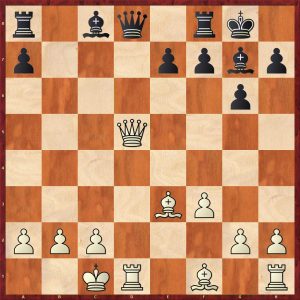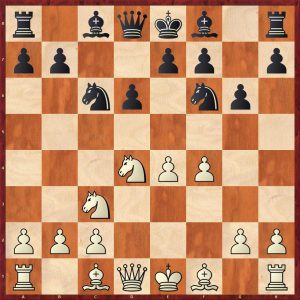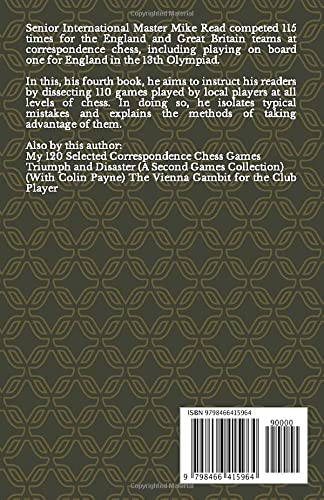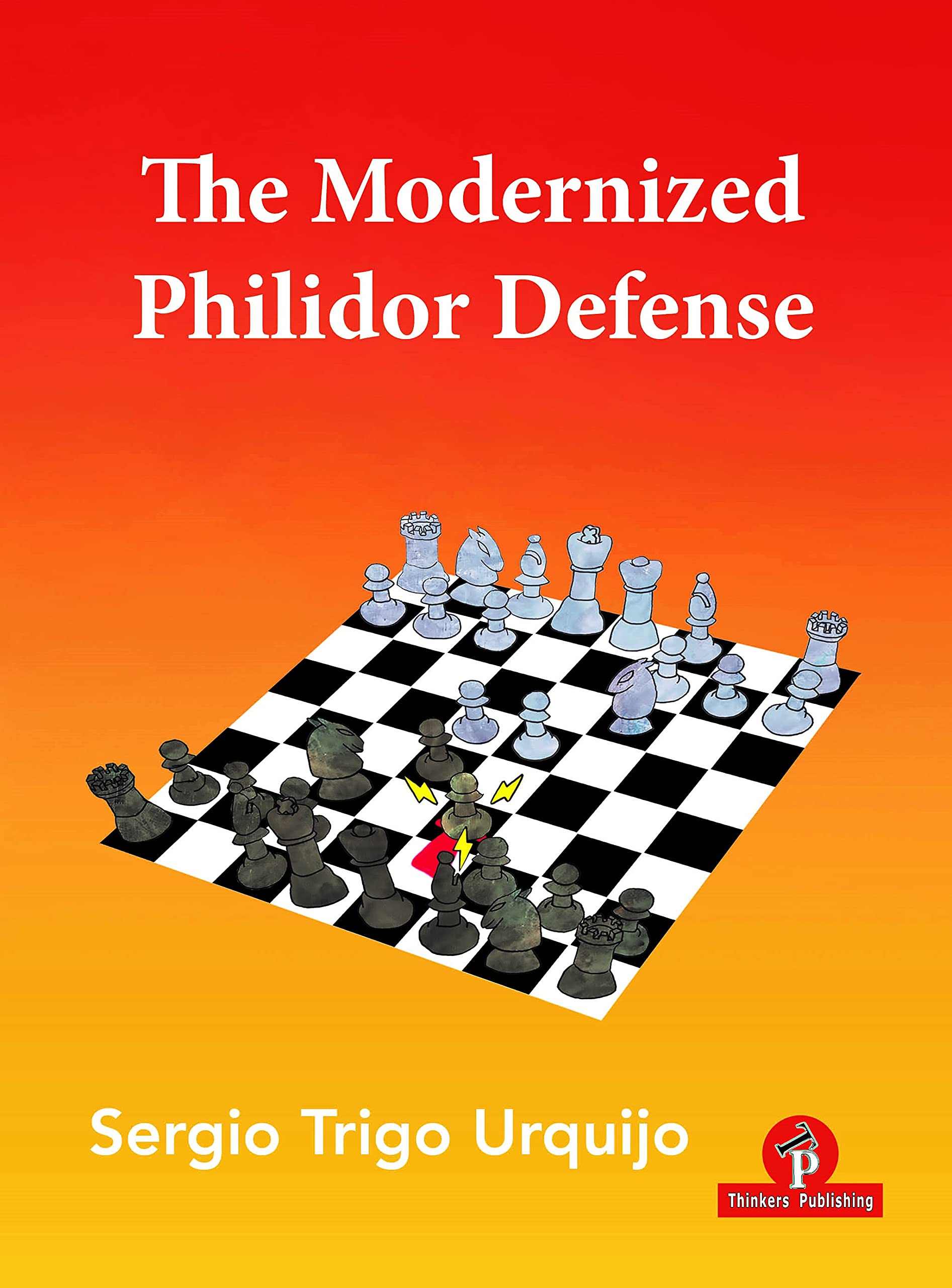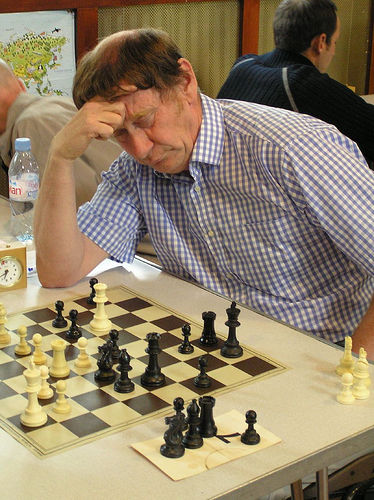Here is the publishers blurb from the rear cover:
“The Barry Attack is a highly aggressive system that arises after 1 d4 Nf6 2 Nf3 g6 3 Nc3 d5 4 Bf4. Although the concept of the Barry Attack has been known for a century or so, the modern interpretation (as with a number of other dynamic white systems) has mainly been developed by English grandmasters over the past couple of decades. This “modern interpretation” is often not very subtle.
If Black provides a target by castling early on the kingside, White will often let rip with moves such as Qd2, Bh6, 0-0-0 and h4-h5, playing very directly for a quick checkmate. If this strikes you as too crude to have a chance against a sophisticated and competent defender, then a quick glance through this book will undoubtedly change your mind. You will witness countless games where very strong players are destroyed on the black side in less than 30 moves. Sometimes a lot less.
This makes the Barry an ideal weapon for those who love to attack. Black’s defence has to be very accurate. If not, a quick annihilation is on the cards. Play the Barry Attack is the ideal guide to this fascinating opening. Anyone who reads this book carefully and studies all White’s attacking ideas will have a fearsome weapon in their armoury.”
About the author:

“Andrew Martin is a FIDE Senior Trainer and International Master. He teaches in twelve schools, is an experienced chess writer and has produced numerous chess DVDs.”
And now on with the review:
As with every recent Everyman Chess publication high quality paper is used and the printing is easy to read. Each diagram is clear as is the instructional text. Figurine algebraic notation is used throughout. The usual and reliable formatting from Brighton-based typesetter IM Byron Jacobs is employed.
The diagrams do not have a “to move” indicator or any kind of caption so you will need to work out for yourself how they relate to the text that they are embedded in. However, this should be fairly obvious.
The cover of the paperback appears to be of thinner material than usual: We miss the versions with built-in book markers at each end.
There is a most helpful Index of Variations and an Index of completed games.
The table of contents is:

Before we continue it is worth taking a look at the pdf extract which includes the Contents, Preface and pages 118 – 137.
At this point we feel the need to make a couple of small confessions: we have played the Barry (and 150/1800) Attacks with the White pieces (but not the Black side) for some years and and share an emotional bond with the opening. We have been friends with the author since we were both members of the famous CentYMCA chess club in Tottenham Court Road, London between 1978 and 1983.
It is worth noting that this book follows-on from the publication (July 2021) of a ChessBase DVD entitledThe Barry Attack (by the same author) which (we don not have but) is likely to provide a useful compliment to this book. However, the book contains more recent content.
We were disappointed not to find a bibliography of sources since we have a particular interest in the development of this opening. For example, there was not a single mention of Aaron Summerscale’s superb A Killer Chess Opening Repertoire, 1998, Everyman Chess, which was one of the first (if not the first) books to discuss The Barry in detail: never mind! Aaron also recorded a superb DVD for Foxy Openings (#7, Anti King-Indian & Grunfeld System) which is still worth watching even in 2023.
Chapter 1, A Barry Timeline is an in-depth history lesson on how the Barry (what was it called before George Hodgson named it? We presume the usual “Queen’s Pawn Opening” type label) developed by examining thirty games spanning from Tartakower – Wahltuch, 1922 to Sadhwani-Jones from 2022, one hundred years later. Fascinating stuff! If only more opening books bothered to do this it would give them a USP over their rivals.
The first real foray in explicit theory is via Chapter Two and the unlikely named Tarzan Attack (whoever gave it this epithet? Mark Hebden or Julian Hodgson perhaps?)
The Tarzan (or Lord Greystoke) is as subtle as a brick (rather akin to the 150 / 1800 Attack) and forms the basis for Chapter Two. We remember for some years that the Barry Attack section of GM Tony Kosten’s ChessPublishing.com and its associated forum had many posters swooning over 5.Qd2 and it soon became the line de rigeur. Of course, adequate resources were found for Black and these are examined in detail. The author tries his best to make 5.Qd2 playable and, of course, at club level (where anything goes according to Lombardy) it is worth a punt. Nineteen games are analysed and the most plausible and critical lines covered so you should be well prepared with either colour.
Chapter three (The Modern 5. Nb5) must be one of the first serious studies of what first appears to be “a bit of a patzer” line with the ambitious
which in 2023 is “all the rage” amongst Barry experts. Thirty-two pages are used to examine eleven games in detail and 5.Nb5 would appear to be a most playable and intriguing line. Almost certainly the first player will be more up-to-date than the second so well worth a try!
For many Barry die-hards Chapter Four (The Original Barry Attack) will be their first port of call to refresh their knowledge. At Seventy-Five pages and thirty-four examined games this is the most substantial chapter covering the most interesting struggles starting with
The author provides a balanced approach showing reliable methods for Black’s defence. Conclusions: you will have to purchase the book to find out what these are!
Chapter Five (Other fifth moves for White) tidies things up with seventeen pages and seven games. This material will mainly be of interest to the second player but there are some idea based around early h4 attempts by White.
The sixth Chapter (4…c6 and Others) will be of interest to the first player since it contains arguably less critical tries for Black where an early …c5 is punted. All good for completeness of course.
Chapter Seven (Transposition to a Pirc) might at first glance be discussing the 150 / 1800 Attack that a Barry move order can become.
However, appearences are deceptive and it contains forty-six pages and twenty-one games where White continues with 5. Bf4 against a Pirc type structure.
(whereas the more common approach would be
which is subtly different)
This is likely to be a good choice against a King’s Indian / Pirc player who is likely not to be familiar with the set-up. I’m not sure these positions have been given a detailed treatment such as this in the literature previously. Interesting stuff!
All in all “Play the Barry Attack” is a welcome and fresh treatment with much original analysis from real games. The author has and continues to be a supporter of lines developed by British players such as the Barry.
Enjoy!
John Upham, Cove, Hampshire, 9th February, 2023

Book Details :
- Paperback : 320 pages
- Publisher: Everyman Chess (21 Nov. 2022)
- Language: English
- ISBN-10:1781946949
- ISBN-13:978-1781946947
- Product Dimensions: 17.3 x 1.7 x 23.8 cm
Official web site of Everyman Chess











